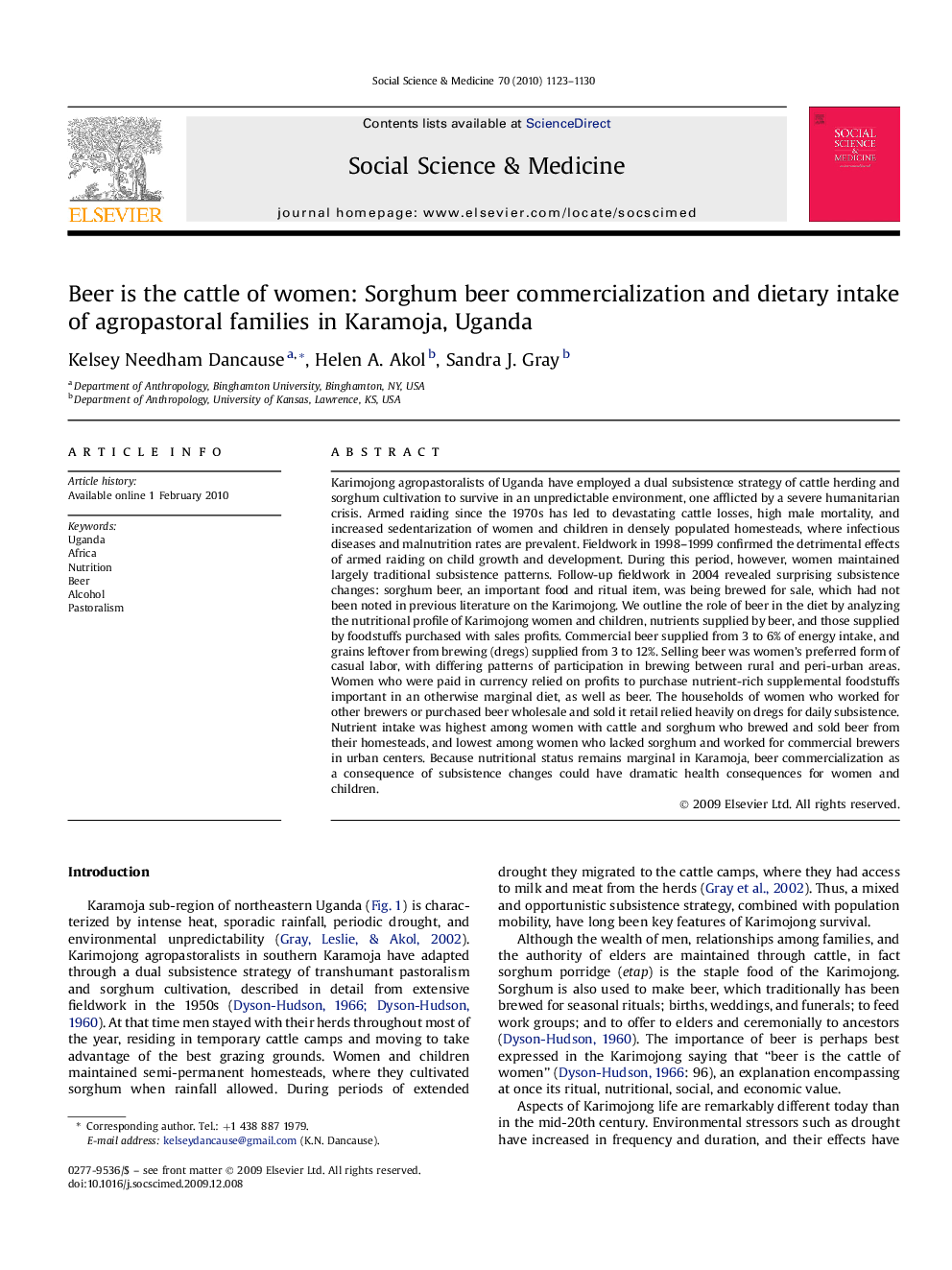| کد مقاله | کد نشریه | سال انتشار | مقاله انگلیسی | نسخه تمام متن |
|---|---|---|---|---|
| 10472023 | 927571 | 2010 | 8 صفحه PDF | دانلود رایگان |
عنوان انگلیسی مقاله ISI
Beer is the cattle of women: Sorghum beer commercialization and dietary intake of agropastoral families in Karamoja, Uganda
دانلود مقاله + سفارش ترجمه
دانلود مقاله ISI انگلیسی
رایگان برای ایرانیان
کلمات کلیدی
موضوعات مرتبط
علوم پزشکی و سلامت
پزشکی و دندانپزشکی
سیاست های بهداشت و سلامت عمومی
پیش نمایش صفحه اول مقاله

چکیده انگلیسی
Karimojong agropastoralists of Uganda have employed a dual subsistence strategy of cattle herding and sorghum cultivation to survive in an unpredictable environment, one afflicted by a severe humanitarian crisis. Armed raiding since the 1970s has led to devastating cattle losses, high male mortality, and increased sedentarization of women and children in densely populated homesteads, where infectious diseases and malnutrition rates are prevalent. Fieldwork in 1998-1999 confirmed the detrimental effects of armed raiding on child growth and development. During this period, however, women maintained largely traditional subsistence patterns. Follow-up fieldwork in 2004 revealed surprising subsistence changes: sorghum beer, an important food and ritual item, was being brewed for sale, which had not been noted in previous literature on the Karimojong. We outline the role of beer in the diet by analyzing the nutritional profile of Karimojong women and children, nutrients supplied by beer, and those supplied by foodstuffs purchased with sales profits. Commercial beer supplied from 3 to 6% of energy intake, and grains leftover from brewing (dregs) supplied from 3 to 12%. Selling beer was women's preferred form of casual labor, with differing patterns of participation in brewing between rural and peri-urban areas. Women who were paid in currency relied on profits to purchase nutrient-rich supplemental foodstuffs important in an otherwise marginal diet, as well as beer. The households of women who worked for other brewers or purchased beer wholesale and sold it retail relied heavily on dregs for daily subsistence. Nutrient intake was highest among women with cattle and sorghum who brewed and sold beer from their homesteads, and lowest among women who lacked sorghum and worked for commercial brewers in urban centers. Because nutritional status remains marginal in Karamoja, beer commercialization as a consequence of subsistence changes could have dramatic health consequences for women and children.
ناشر
Database: Elsevier - ScienceDirect (ساینس دایرکت)
Journal: Social Science & Medicine - Volume 70, Issue 8, April 2010, Pages 1123-1130
Journal: Social Science & Medicine - Volume 70, Issue 8, April 2010, Pages 1123-1130
نویسندگان
Kelsey Needham Dancause, Helen A. Akol, Sandra J. Gray,